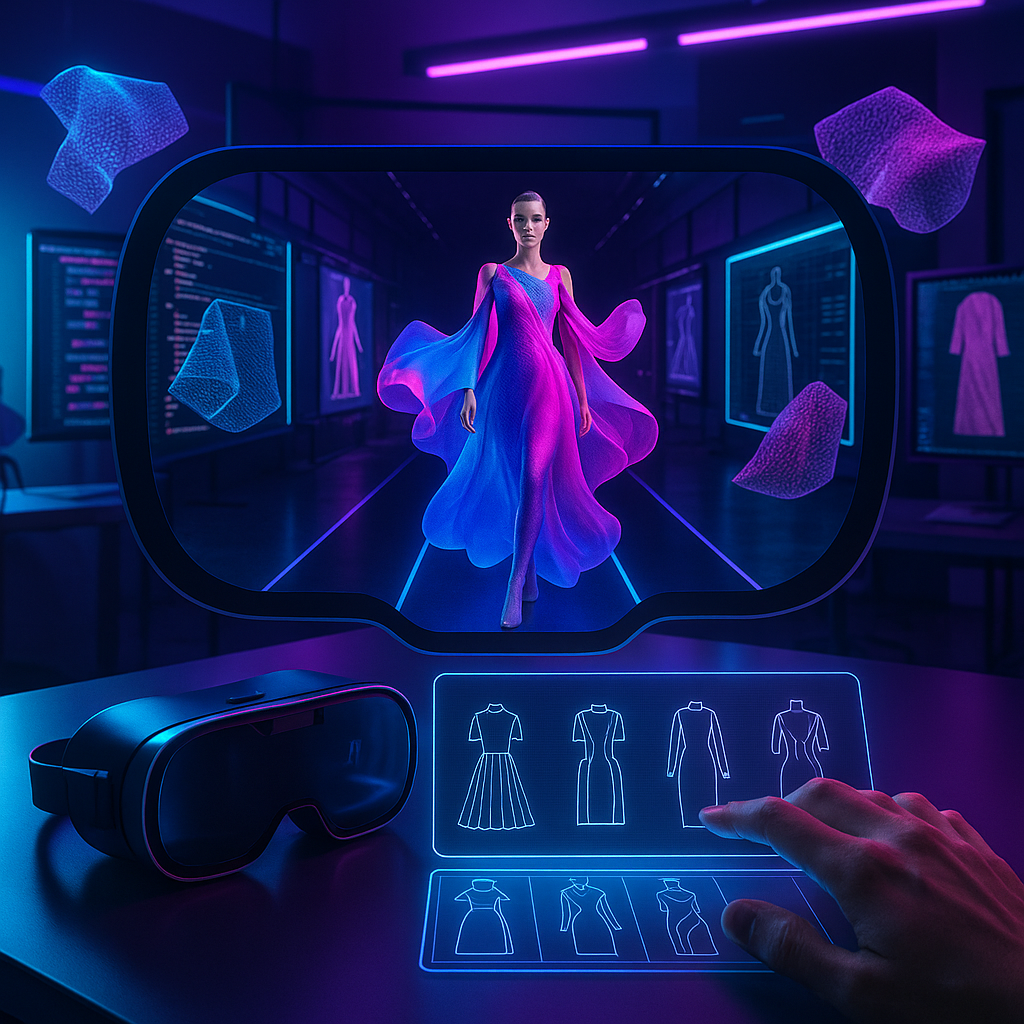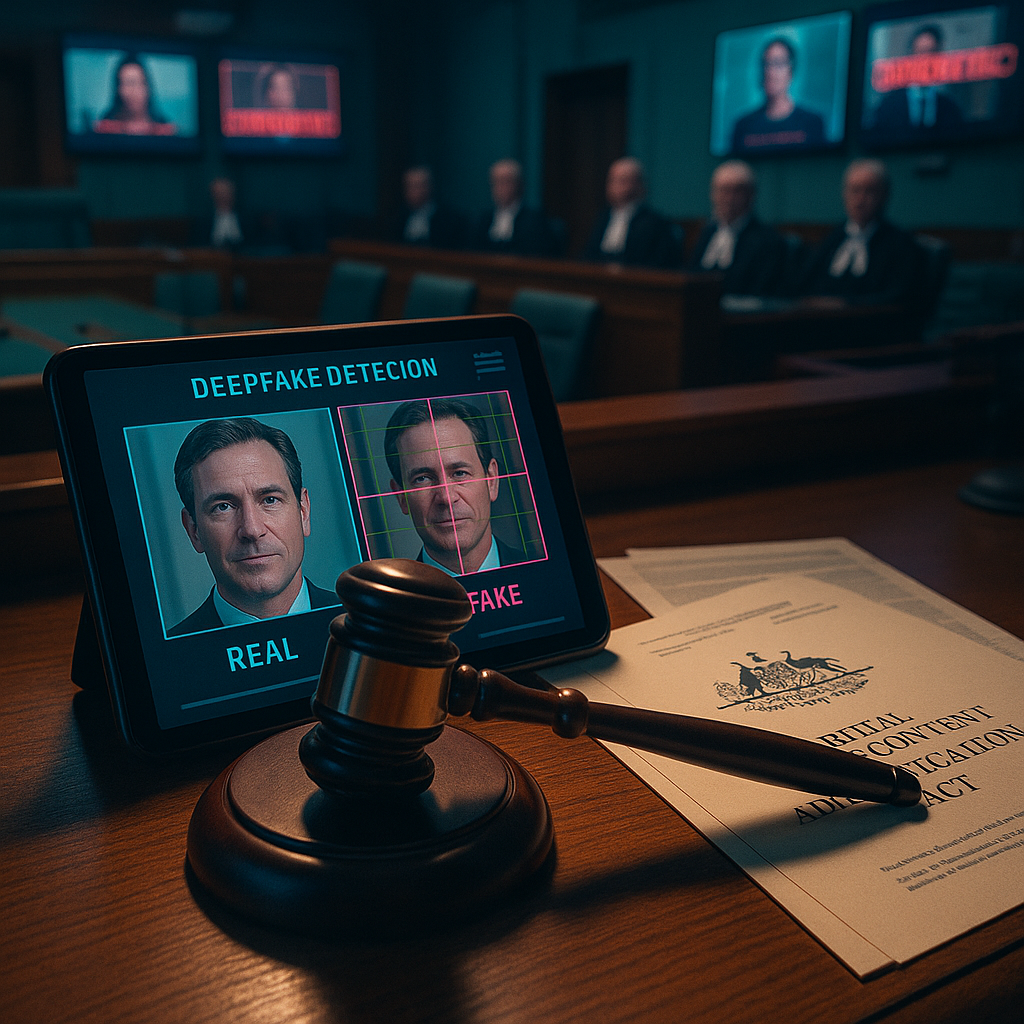Key Takeaways
- Virtual runways dismantle fashion’s elite barriers: Leveraging AI and VR, fashion houses are transforming once-exclusive couture shows into global digital spectacles. These innovations invite audiences worldwide, extending the reach of high fashion far beyond the traditional front rows of Paris or Milan.
- AI reinvents digital clothing: Advanced algorithms now reconstruct and reinterpret physical designs as dynamic, interactive 3D garments. This technology allows designers to explore new forms, textures, and responsive features that analog materials could never achieve.
- Virtual avatars revolutionize modeling: AI-powered avatars command VR runways, representing a vast spectrum of styles, body types, and personalities. This shift challenges traditional beauty standards, fostering a richer, more inclusive digital couture landscape.
- Immersive storytelling transforms fashion shows: With VR and AI, runway presentations have evolved into interactive narratives. Viewers participate through personalized camera angles, real-time digital try-ons, and audience-driven plotlines, dissolving the boundary between observer and participant.
- Designers access a boundless creative canvas: Freed from the confines of geography and materials, visionary creators can debut digital-only collections and experiment with sustainable, avant-garde fashion. The result is a worldwide dialogue, as designers connect, learn, and innovate alongside a global fan base.
- Democratization is the new luxury: AI-powered virtual runways upend the hierarchy of exclusivity, bringing premium fashion experiences to anyone with an internet connection. High fashion shifts from a spectacle observed to a story shared. This marks a profound cultural transformation.
As digital technologies weave seamlessly into the sartorial realm, virtual fashion AI and VR runways are not merely upgrading runway tech. They are fundamentally rewriting the culture and very meaning of couture. Ahead, we unravel the creative innovations, sweeping cultural shifts, and untapped possibilities radiating from the cutting edge of digital fashion storytelling.
Introduction
There was a time when the world of high fashion was hidden behind velvet ropes, its front rows curated for the privileged and powerful. The emergence of virtual fashion AI and VR runways now tears those barriers down, welcoming anyone with a screen to step inside the heart of couture. The era of physical exclusivity is giving way to digital immersion, where runways become virtual stages. Models transform into AI-powered avatars, and garments emerge from clouds of code rather than bolts of silk.
This revolution is far more profound than a technological facelift. It’s a wholesale reimagining of fashion itself: who dreams it up, who wears it, and even what counts as a “garment.” Designers no longer labor under the constraints of physical textiles or a small cadre of models. Instead, they wield algorithms and immersive digital tools to create and share visions that are as inclusive as they are imaginative. Let’s journey into this new intersection of AI ingenuity and VR spectacle, where digital couture democratizes luxury, collapses creative boundaries, and dares us to imagine the future of what we wear.
The Virtual Runway Revolution: How AI is Reshaping Fashion’s Digital Frontier
Virtual runways now sit at the intriguing nexus of fashion artistry and technological innovation. The runway, once limited to exclusive venues and elite audiences, has migrated into immersive digital realms. Here, AI-powered garments defy the laws of physics, while virtual models present looks unbound by material reality.
Stay Sharp. Stay Ahead.
Join our Telegram Channel for exclusive content, real insights,
engage with us and other members and get access to
insider updates, early news and top insights.
 Join the Channel
Join the Channel
The Anatomy of a VR Runway Experience
A modern VR runway transcends simple digital depiction. Today’s virtual fashion shows are multi-sensory environments that place the viewer at the center of the spectacle. Key features include:
- Real-time rendering engines capable of lifelike visualizations, complete with intricate fabric physics and minute design details.
- Spatial audio systems that offer an immersive backdrop, positioning music, voices, and effects to complement the show’s narrative arc.
- Interactive elements that empower viewers to shift perspectives, zoom into textures, or even customize garments in real time.
These technologies have evolved rapidly. Where early forays into virtual fashion relied on static, pre-rendered animations, today’s platforms leverage advanced rendering and interaction to mimic the immediacy and dynamism of live events. Sometimes they even surpass them.
Leading the charge, fashion houses like Balenciaga have merged fashion with video game dynamics, creating runways playable as digital levels. Digital-native brands such as The Fabricant dissolve the line between onlooker and performer entirely, allowing users to directly impact the virtual experience. This democratizes fashion’s power structure, dismantling the old order of velvet ropes and exclusive invitations in favor of open participation.
With VR technology growing more accessible, these experiences will soon transcend visual spectacle, integrating tactile feedback and motion sensing. This ongoing transformation is more than technical; it signals a fundamental reorientation of fashion’s relationship with the public. The new paradigm prioritizes collective engagement, interactive storytelling, and the co-creation of trends.
By integrating breakthrough generative techniques, fashion houses are also forging new ground in sustainable fashion design. Platforms that utilize advanced algorithms to reduce waste and optimize processes are shaping a more eco-friendly future. To learn more about these innovations, explore how generative AI is revolutionizing sustainable fashion design.
AI-Generated Fashion: Beyond Human Imagination
The revolution in digital couture resides not just in how designs are displayed but in how they’re conceived. Artificial intelligence is quickly shifting from a mere tool to an equal partner in the creative process, breaking through human limitations and opening up uncharted aesthetic territory.
How AI Creates Virtual Couture
Modern AI design platforms deploy a variety of methods, including:
- Generative Adversarial Networks (GANs): These systems analyze and internalize vast fashion archives, synthesizing entirely new patterns that push beyond historical precedents.
- Style transfer algorithms: By transposing artistic motifs onto garment templates, they generate visual effects and textile illusions that would be impossible with traditional methods.
- Parametric design systems: These allow designers to input conceptual parameters, letting the AI generate thousands of variations, each iteratively refined.
- Material simulation engines: Virtual textiles are rendered with scientific precision, predicting drape, movement, and interaction with light in real time.
Crucially, AI isn’t simply an imitator. It has no built-in reference for what’s “normal” or “commercial,” freeing it to invent unpredictable silhouettes, augmented textures, and interactive fashion responsive to changes in its environment.
Visionary designers such as Iris van Herpen collaborate with AI to meld the organic and the algorithmic, while platforms like DressX allow for consumer use of digital-only fashion that never physically materializes. In this burgeoning world, a “garment” might be a living, shifting digital artifact. One that only exists in virtual space or on social media.
AI-driven tools are also lowering traditional barriers to entry. For instance, platforms like Aidaptive invite anyone to describe their dream garment in everyday language and watch the AI iterate unique outfits on demand. This broadens the field of designers, empowering those without formal training or access to conventional channels.
The creative process is now becoming a hybrid effort: human intuition directs, AI explores, and together they produce design frontiers previously unimaginable. This collaboration hints at a future where fashion is an ongoing conversation among human and machine intelligence.
Staying at the forefront of this creative merger involves understanding the evolving paradigms of human-AI co-design and digital craftsmanship. If you’re interested in the role of co-creation in design, see human-AI co-creation in digital craftsmanship.
The Business Transformation: New Models for Digital Couture
Virtual fashion is upending the business of couture as deeply as it disrupts creativity and presentation. The industry’s transition from exclusive scarcity to digital accessibility is sparking entirely new economic models, creating value in forms previously unrecognized.
Economic Models of Virtual Fashion
The digital fashion economy stands on several innovative pillars:
- Direct-to-avatar sales empower users to buy digital garments for their online identities, from social media skins to gaming platforms.
- Augmented reality try-ons allow users to project digital outfits onto themselves before purchasing physical versions or as virtual-only fashion.
- NFT-based authenticity certificates enable secure, tradeable digital ownership of exclusive couture items.
- Subscription models let users maintain ever-evolving digital wardrobes, staying at the forefront of fashion without the cost or waste of physical garments.
Notably, these models address persistent challenges around sustainability. By making creative self-expression possible without additional material waste or carbon emissions, they respond to environmental demands while sustaining consumer excitement. The Fabricant’s sales of digital-only couture for substantial sums demonstrate that value increasingly arises from narrative, design, and virtual presence rather than tangible goods.
The impact extends into workflow and operation. Conventional design entailed laborious prototyping, frequent shipping, and physically intensive showcases—resource-heavy processes that added up fast. Digitally native design hugely shortens development cycles, enabling nimble collaboration across continents and minimizing environmental footprint.
Stay Sharp. Stay Ahead.
Join our Telegram Channel for exclusive content, real insights,
engage with us and other members and get access to
insider updates, early news and top insights.
 Join the Channel
Join the Channel
Auroboros’s “Biomimicry” collection, conceived entirely in digital form, reflects this new approach. Its virtual runway featured digital garments with features like dynamic growth and transformation, highlighting what’s possible when creativity is liberated from the limits of physical materials.
As metaverse platforms and AR integration advance, we can expect these ecosystems to mature from niche communities to mainstream marketplaces, reshaping how and where fashion is consumed and experienced.
Democratizing High Fashion Through Virtual Access
Perhaps the most radical shift ushered in by virtual runways and AI-driven couture is the dismantling of fashion’s exclusivity. Digital tools have made an art form once gated by geography, social capital, and wealth accessible to a dramatically broader audience.
Breaking the Exclusivity Barrier
The barriers once central to fashion’s power (including limited physical capacity, restrictive guest lists, city-centric schedules, and carefully managed publicity) are rapidly dissolving. Events like Helsinki Fashion Week’s digital pivot demonstrated this impact: attendance quadrupling, with viewers streaming in from over a hundred countries. No physical event could match that reach.
The ripple effect is profound. Platforms such as DressX and The Fabricant empower users to dress in designer digital looks for a fraction of the price of their physical counterparts. When Balenciaga unveiled collections in a video game, anyone could try them on regardless of body type, gender, or location, making high fashion radically more inclusive.
Virtualization lowers entry barriers for creatives as well. Without the need for expensive samples or show venues, emerging designers from diverse backgrounds can gain exposure and clientele. Marketplaces like Digitalax have emerged specifically for digital-native designers, nurturing new voices and visions that might never pass the traditional gatekeepers.
This technological leveling of the playing field transforms fashion into a forum for global, participatory style. As people’s identities become increasingly woven between physical and digital realms, access to high fashion becomes less a privilege than a possibility for everyone.
The democratization trend in digital fashion echoes wider AI applications, including the way artificial intelligence is used to preserve inclusive and diverse narratives across society. Learn how AI is shaping digital legacy and identity in AI collective memory.
The Future Canvas: Emerging Possibilities in Virtual Fashion
The marriage of AI and VR is not only pushing the established boundaries of wearable art, but also laying the groundwork for new paradigms in self-expression, design, and even social interaction.
Beyond Static Garments: Dynamic Digital Couture
The next wave of digital couture is alive, mutable, and responsive. Innovations include:
- Environmental interactivity: Garments that change color, form, or texture in response to sounds, ambient light, or virtual environments.
- Procedural and generative design: Items that evolve algorithmically, offering each wearer a unique digital iteration over time.
- Biometric integration: Outfits programmed to reflect emotional states or physical conditions through shifting virtual patterns.
- User-modifiable aesthetics: Clothing that can be customized or hacked by the wearer, encouraging collaborative remix culture.
The Fabricant’s “Iridescence” piece is a compelling example: a digital garment whose appearance never settles, instead changing fluidly with every angle and lighting nuance. This “perpetual beta” challenges the binary of finished product and invites endless creative engagement.
Collaboration is also being redefined. Where fashion’s past was dictated behind closed doors, digital ateliers are increasingly communal. Carlings’ “Address the Future” campaign allowed the public to co-create pieces, which were in turn rendered on their social media avatars. This participatory innovation signals a new future in which fashion design is not only more accessible, but also co-owned by its audience.
This new creative landscape is mirrored in other industries grappling with digitization and democratization. In healthcare, digital avatars and AR are advancing personalized medicine and therapy. In education, VR classrooms allow students worldwide to experience learning unbound by geography. In marketing, interactive virtual try-ons and personalized brand experiences rewrite consumer engagement. The same democratizing, dynamic principles reshaping couture are transforming these sectors, enabling inclusivity, personalization, and bold reimagining of professional practices.
If the interplay of avatars, generative systems, and evolving digital selves sparks your interest, you may find the concept of cybernetic identity and posthumanism an illuminating expansion on how technology is remaking personal and aesthetic boundaries.
Conclusion
The rise of virtual runways and AI-powered digital couture marks more than an upgrade in runway technology. It signals a seismic cultural shift in how fashion is created, consumed, and understood. Freed from the limits of material production and velvet-rope exclusivity, both designers and audiences are empowered as co-authors of style, engaged in a vibrant, participatory narrative.
By recalibrating fashion from static, exclusive spectacle to fluid, accessible experience, digital technologies foster a culture where creative exploration and self-expression outpace tradition and hierarchy. This is not just a new way to showcase clothes. It’s an entirely new way to imagine and inhabit identity, beauty, and even community itself.
Looking forward, fashion will increasingly become a proving ground for the possibilities latent in digital culture. Collaboration will replace conventioneering, and abundance will replace scarcity. Those industries and individuals bold enough to embrace these shifts will not only shape the next era of style, but will also define how we inhabit and represent ourselves in both digital and physical worlds. The real challenge is no longer whether technology will redefine couture, but how intentionally we seize its promise to broaden access, deepen creativity, and co-create the future of being seen.





Leave a Reply